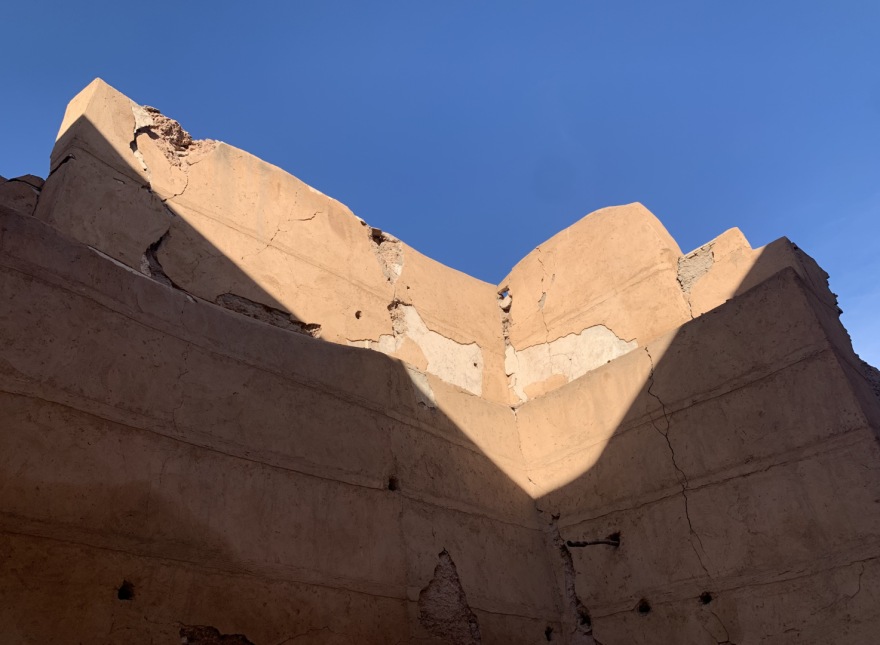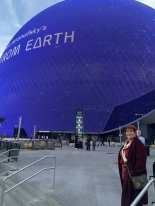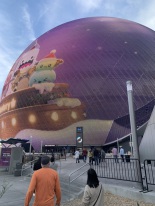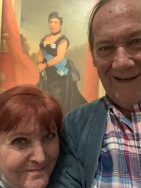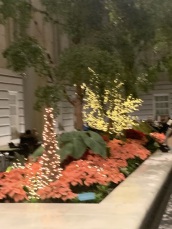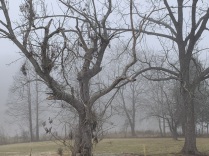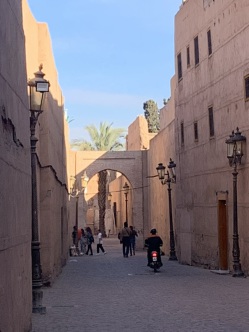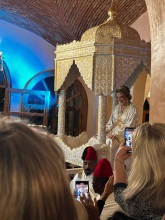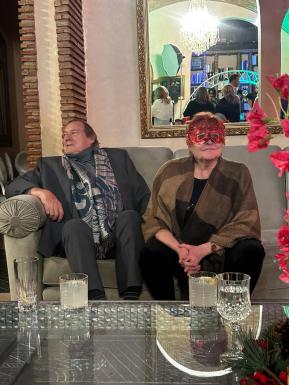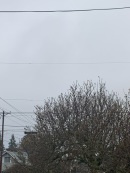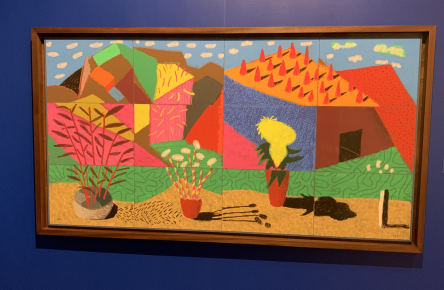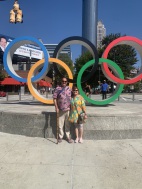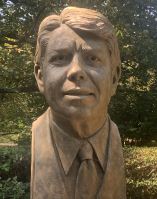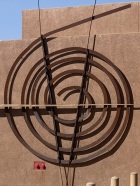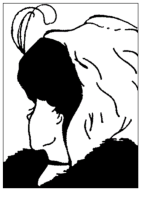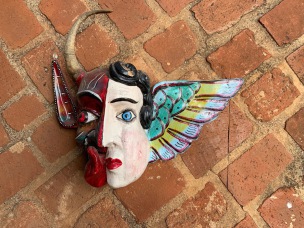the poetics of orthobionomy
a 'book' of beginnings
Coming up in August:
SOBI Sponsored Online Study Group:
The Body Schema
with SOBI Advanced Instructor Richard Valasek
August 15, 2024
6:00 PM Eastern, 5:00 PM Central, 4:00 PM Mountain, 3:00 PM Pacific, 12:00 PM Hawaii (US and Canada)
Three hours
SOBI member $45; non-member $55
Society of Ortho-Bionomy International sponsored (Zoom) study group
The Body Schema: Ortho-Bionomy from the Inside
To register go to:
https://www.ortho-bionomy.org/aws/SOBI/pt/sp/events
Taking a phenomenological view of Ortho-Bionomy we will hold focus as much as possible on your own experience as a practitioner. The body schema is your body's own subjective experience of itself. The body schema works in at least three moods: the indicative, the imperative, and the subjunctive. That is to say, it describes how the body is arranged in relation to its immediate surround (indicative mood), it gives commands (imperative), and considers possibilities (subjunctive). The subjunctive is the as-if body. Before the flesh-body moves through space, it is preceded by the as-if body.
The body schema plays a key role in responding to trauma.
I consider Chapman's Reflex Network to be of the body schema.
Most of the time of this three-hour slot I hope to spend on practices. The last section of this pot of notes is a kind of list of things—practices—we might do. And wonder together about. Praxis.
I have made many starts on these notes and all until now would just go flat for me and I would lose interest. I think part of the problem was that each of the earlier phases was too linear. The body schema (sometimes noted BS) is anything but linear. So you don’t necessarily need to read head to tail. You can scroll and scan and see what gets your attention.
Body Schema (aka Postural body model) is a concept first introduced by Sir Henry Head, an English neurologist, in 1911. Since then it has been greatly expanded upon and can be a sometimes contentious area of research.
Cybernetics refers to the science of automatic control systems in both machines and living things. The body schema plays a central role in controlling movement. It is, therefore, essential in managing the bodily response to trauma.
Like all of our most vital functions, the body scheme functions almost entirely out of the range of conscious awareness. Almost. Body Schema and body image differ in this respect. Though in some earlier literature the two terms are interchangeable it has become more standard to differentiate the two. Body image exists largely in the cognitive realm, your thoughts and feelings about your bodily aspect,
We can tentatively define body image as a ‘system of perceptions, attitudes,
and beliefs pertaining to one’s own body’ and body schema as a ‘system of
sensory-motor capacitiesthat function without awareness or the necessity of
perceptual monitoring’.
Shaun Gallagher, in Body Schema and Body Image (p. xv). OUP Oxford. Kindle Edition.
The body schema represents in a sensorimotor format bodily parameters that
are useful for action planning and control.
Body Schema and Body Image (p. xv). OUP Oxford. Kindle Edition.
But it’s more than that, deeper and wider. It is the “as-if” phase of the body (perhaps it is, or so it might be).
The overarching goal of any organism is ongoingness; to continue living (within an allotted time) and to reproduce. Organisms are thus able to act upon their environment in ways that are likely to favor the odds toward continuance.
Animacy may be the main feature distinguishing the living from the non-living (see Maxine Sheets-Johnstone, The Primacy of Movement). There is no bright line separating the living from the non-living. There are chemical systems that evolve. There are prions and there are viruses. There is a gradation into living organisms. There is no agreed-upon definition of what constitutes Life. For this immediate purpose, I will consider the Bacteria and the Archaebacteria as the simplest forms of living organisms.
What do organisms do? I make a list:
- Sensing
- Computation/Evaluation
- Moving
- Holding
- Letting go
- Connecting
- Nothing
This list has seven items. Sometimes when I make the list it has more items. I’m not always sure that “nothing” belongs on the list. But I think of organisms that can go into states of suspended animation for long periods of time, can move back and forth between the realms of living and non-living; back and forth, from thing to no-thing.
The Invention of Inside Outside
Life is the world’s interior. Interiority was invented with the membrane. Sensing can be defined as energy impinging on a membrane. The living membrane converts energy into information. At the biochemical level, knowledge is a change in one’s state.
Value is implicit in the action(s) of computation and evaluation. Something is preferred over something else, movement toward (appetitive) versus movement away from; open for this but not for that. Ongoingness is the first value.
Movement itself needs to be thought about. What is intentional movement against a background (or within a matrix) of crawling chaos? Are these different kinds of movement? Maybe intentional movement is a harnessing of some passing vortex. What does it mean to be still in a world that is nothing but motion?
Movement is bidirectional. Perhaps this in what Newton was feeling toward with his third law of motion. A book resting on a table is exerting a downward force upon the table, but at the same time, the table is exerting an equal force upon the book. What do you need to do to stand up? You push down.
The body mostly runs in background, conscious access is severely limited with very little control granted. When it’s running properly you don’t even know it’s there, the
proper body vanishes away into its (your) always becoming. There is a strong voice in contemporary neuroscience that, functionally there is no actual body, but only a neural construct, a shame. Smoke
on that.
When the need for holding is no more
but still holding
(ghosts of trauma)
Some of the tissues stay reluctant
Trauma not fully metabolized.
The Body Schema (let’s say BS)
Is the Body’s Holy Ghost.
Wikipedia is where I began to track the BS.
Can’t remember where I first saw the term,
maybe it was in learning about the Readiness Potential
(which I think is a reflection of the action of BS).
Wikipedia tells us:
Neuroscientists Patrick Haggard and Daniel Wolpert have identified seven fundamental properties of the body schema. It is spatially coded, modular, adaptable, supramodal, coherent, interpersonal, and updated with movement.
Repeat:
- Spatially coded
- Modular
- Adaptable
- Supramodal
- Coherent
- Interpersonal
- Updated with movement
Lots of words explaining what these words mean follow:
https://en.wikipedia.org/wiki/Body_schema
Mostly I’m focused here on that Interpersonality of BS.
That word does not go far enough.
More words about Interpersonal from Wikipedia:
It is thought that an individual's body schema is used to represent both one's own body and the bodies of others. Mirror neurons are thought to play a role in the interpersonal characteristics of body schema. Interpersonal projection of one's body schema plays an important role in successfully imitating motions such as hand gestures, especially while maintaining the handedness and location of the gesture, but not necessarily copying the exact motion itself.
I like to think of the BS as the apophatic of (dumb) matter, a presence through absence.
I would say that beyond interpersonal it is impersonal, undifferentiated.
In this way, it acts similar to a mucus
I know I’m treading too close to
Bergson’s discredited Elan Vital
Lying limp on Philosophy’s discard pile.
I do not want to try to revive it.
A mucus is a kind of transition zone
—a cusp, a hinge—
A mucus cleaves
Cleave is a contronym,
a Janus word looks both ways
Cleave is a glue and a lubricant.
Cut-off is Attachment
The BS extends into the social field
Becomes what it is becoming
It is already there
In advance of getting there
(Being there precedes getting there?
That sounds bass-ackward but I get that it could work)
Echo of Pauls,
“The event has already occurred,
we are only performing the ritual.”
Back to Push vs Pull
How do I intervene?
Do I assert authority (however robed)?
Force into submission?
The bias of orthobionomy is very much toward the other end of the spectral arrow: change “as if” initiated and desired from its own inside.
In a very real and not at all understood sense you can find you and the other person in an exact same spot at an exact same time. Different and same cleaving together. As if one and as if two at the same as if time.
Pauls’s sense of the “end” of a Phase Seven practice, when things have come to balance, the umbrella-like (mushroom) stabilizer is visualized in place atop; if you attend to the tip of the spiral, it is not at rest, under the sign of the noon, but it is oscillating back and forth. Dynamic balance, waving in the breeze of possible futures.
The Ideal
Because of your presence
Your simple being there
(Nothing simple about it)
A witness to the existence
Of another, samesimilar
Metabolism switches back on.
Nothing is the least/most you can do.
[Intrusive thought. Who- whatever you think you are you are not, always something else. There certainly is a scale on which I am not, never actually a zero but always approaching so close it counts as zero.]
[Meaning is closely related to scale]
There is evidence that the BS begins development in utero. Vestibular information is important in the development. I visualize three domes in the body. The cranial dome covers the head-brain; the soft and mobile diaphragm dome covers the gut-brain*; the dome of the feet (each arch is half a dome) sits over the earth-brain.
* The “gut brain,” or enteric brain, is a very social brain. This 3 dome model is an enactivist toy. “Enactivism is an action theory that understands biological functions to have a process ontology. Ontologies provide an account or perspective of the nature and relation of things in the world [59]. Two overarching and contrasting ontological viewpoints in biology are substance ontology and process ontology.” I would point you to Enactivist Interventions: Rethinking the Mind by Shaun Gallagher.
Some Things to Play With
My mind tells me that fleshy interfaces must exist throughout the body. Something very much like the Chapman’s Network must be there. We might play a bit with these potent points.
I like to hang out in that range where thought becomes movement. The least movement one can do is to think about a movement. It flickers on and off.
Practice holding ; practice letting go.
Play “Simon Says.”
Simon says “Practice holding ; practice letting go.”
Practice standing up.
Practice
Practice
Praxis
There is a way of doing Isometrics that is lots of fun.
Ill show and suggest some things but this will be most successful when you, participating, toss out ideas to try. Take it away from me.
Traction
The Blind Man And The Elephant
who went to see the elephant (Though all of them were blind),
that each by observation, might satisfy his mind.
The first approached the elephant, and, happening to fall,
against his broad and sturdy side, at once began to bawl:
"God bless me! but the elephant, is nothing but a wall!"
The second feeling of the tusk, cried: "Ho! what have we here,
so very round and smooth and sharp? To me tis mighty clear,
this wonder of an elephant, is very like a spear!"
The third approached the animal, and, happening to take,
the squirming trunk within his hands, "I see," quoth he,
the elephant is very like a snake!"
The fourth reached out his eager hand, and felt about the knee:
"What most this wondrous beast is like, is mighty plain," quoth he;
"Tis clear enough the elephant is very like a tree."
The fifth, who chanced to touch the ear, Said; "E'en the blindest man
can tell what this resembles most; Deny the fact who can,
This marvel of an elephant, is very like a fan!"
The sixth no sooner had begun, about the beast to grope,
than, seizing on the swinging tail, that fell within his scope,
"I see," quothe he, "the elephant is very like a rope!"
And so these men of Indostan, disputed loud and long,
each in his own opinion, exceeding stiff and strong,
Though each was partly in the right, and all were in the wrong!
So, oft in theologic wars, the disputants, I ween,
tread on in utter ignorance, of what each other mean,
and prate about the elephant, not one of them has seen!
A Brief Pictorial Review of Where I've Been
(and why I've not been here)
I have neglected this webbiness for several months. After Atlanta much was going on to keep me from it. Most of the distraction was travel. First stop Las Vegas to see The Sphere, the Postcard from Earth show. The Sphere is a paean to Technology. The script for the Aronofsky film must have been produced during the writers' strike: embarrassingly bad. It's all for the spectacle.
Back to VA for a couple days then the final leg of the trip, Tacoma WA to spend Karen's birthday with her old friend. Unfortunately Karen came down with a nasty URI our last day in Morocco. No Hockey games, no going out. We bundled up, watched old movies, played games, sipped whiskey, and talked.
Home now for a few weeks, well recovered, even rejuvenated, and inspired. Inspired in part by a David Hockney exhibit at the Honolulu Museum of Art.
Are we ready for What's Next?
I want to hold small, intimate Residential Experiences in vibrant urban setting. Eight people maximum, including Karen and me. Minimum of 5 days (to count for SOBI as a residential). We want only for our expenses to be covered. Any money beyond our expenses will pass on to SOBI.
If there is a coordinator (and there really shoud be) their expenses and fees need to be included.
Most of the food part will be local restaurants. Whatever lodging is procurred must have a kitchen so eating in will always be an option.
This is inspired by how the Atlanta class turned out, with an Airbnb apartment at Atlantic Station.
Chicago is where we want to go next and we are open to proposals for other places as well. It's hard to say what the cost will be but you can see that with no fee for the Instructor it's probably less than half the cost you'd expect to pay.
We also want to visit the British Isles. This could be great fun in Edinburgh or Belfast. More expense in getting there. Plan your own wander and we all meet up somewhere for 5 days of orthobionomy.
Contact me if you are interested in being a part of a small group Residential.
And Here's a Grander Idea
I want an Anatomy and Physiology grounded on the nature of Life. An A&P of the Body in Relationship, a poetics of A&P. Centered perhaps on the Body Schema, the many ways, and Phases of the Body extending across the globe. How is Care a necessary virtue (and why it gets short shrift in the Virtue lit)?
We will begin with the simplest duality: inside / outside. It becomes clear that Life is the inside of the world and it must have a membrane. So Value is inserted: difference, preferences, selection: all toward the overriding and archaic value: being is better than not being. Becoming is better than unbecoming?
A Five-Day (minimum) Residential (SOBI credit for either Residential or A&P). A follow-on of previous Unphased Wonder Valley Residential.
Aiming for New England territory.
Ideas embodied in orthobionomy practices, praxis.
Three to Four Ortho-Bionomy Advanced Instructors.
Need at least a two-year lead-up; Instructors and coordinators need to be able to commit to regular virtual meetings, and at least one two-day in-person gathering, that is, a class. It could be a hybrid event?
I will set up a separate page to toss in ideas I have for content.
Who would be on your Unphased Dream Team of three or four Instructors?
However, it may show up I will begin a new chapter. For now, I'll call it:
"Anatomy and Physiology of the Body that Isn't"
You can always come up with other ways of looking at things. That's what the Phases gives us, different ways to approach the Body, different portals, differnt perspectives.
(AKA Acknowledgments)
I have had to train myself to move gratitude up to the front. Perhaps I will explore in one of my three Introductions why I have struggled with gratitude. For now I will try some simple lists. The start of one list is simple: Karen Valasek, spouse, partner, co-parent, orthobionomer extraordinaire. I would for sure put Lynn Drummer on the list. Probably next after Karen though in Ortho-Bionomy she . . .
<< New text box >>
Body Schema
Looking back at my list I wonder where this might go next. We won't know until we are there together doing it. But right now body schema is salient. I direct your here to see what's in the glassary on body schema. I hope to add more to this entry, or direct also to Motor Cognition (see References, Jennerod, Marc) but that's not yet written.
Whatever names we use, whatever words, the curiosity at the core is this: How does a concept, a thought, move matter, achange the world. We want to hang our in that hinge. Playing in the "as-if." We will certainly play the childhood game of Simon Says but will be aiming for a different impact, a different take-away (not "You must pay close attention" as your teacher taught you).
As we play this game we will start to look at movement itself, a phenomenological examination of movement, the experience of movement. Heraclitus wrote that there is nothing but movement. Octavia Butler wrote that God is Movement. We will look at movement apophatically.
News flash! There is no Universe! It's been a multiverse all along.
The Extended Organism
If we were to define the body as the site of physiology then the appearance of the body radically changes. Many necessary physiological functions take place outside of what we normally define as the body. We can begin by looking at the microbiome.
Orthobionomy clarifies the bond between self, other, and world
The Principle of Reciprocity: Care of the Other through Care of the Self
